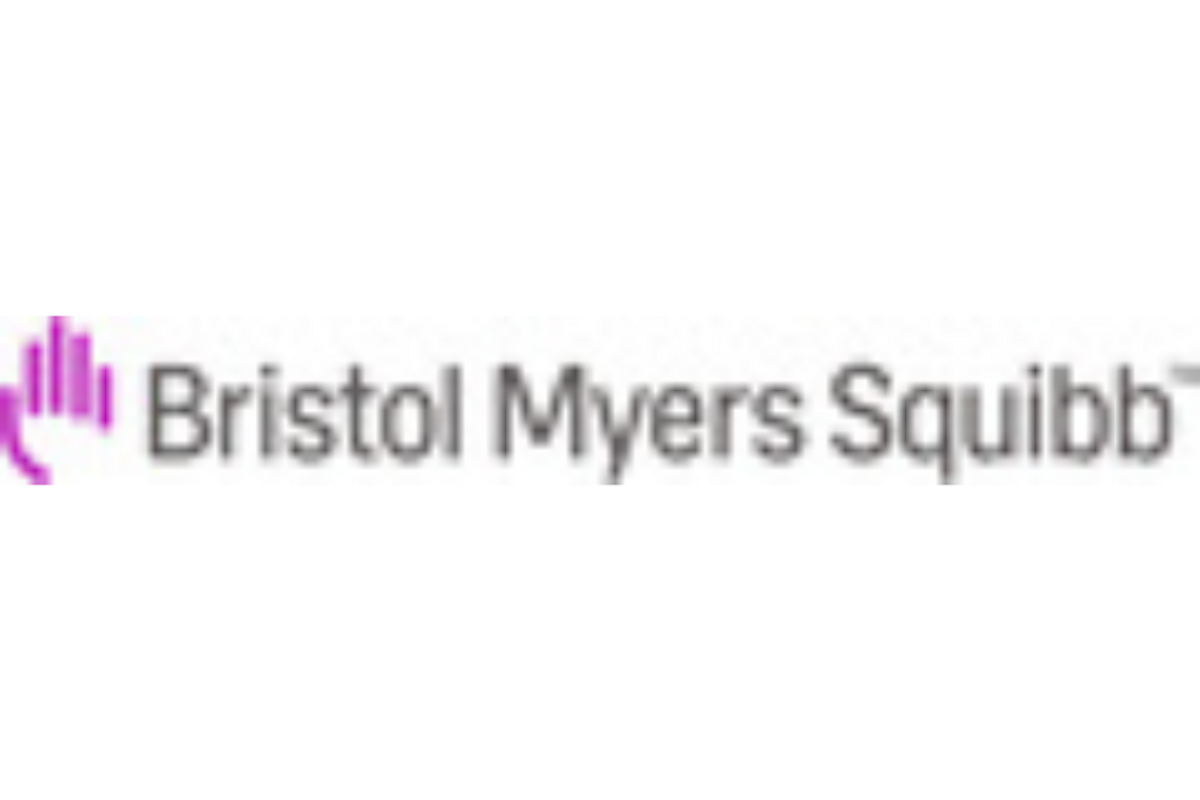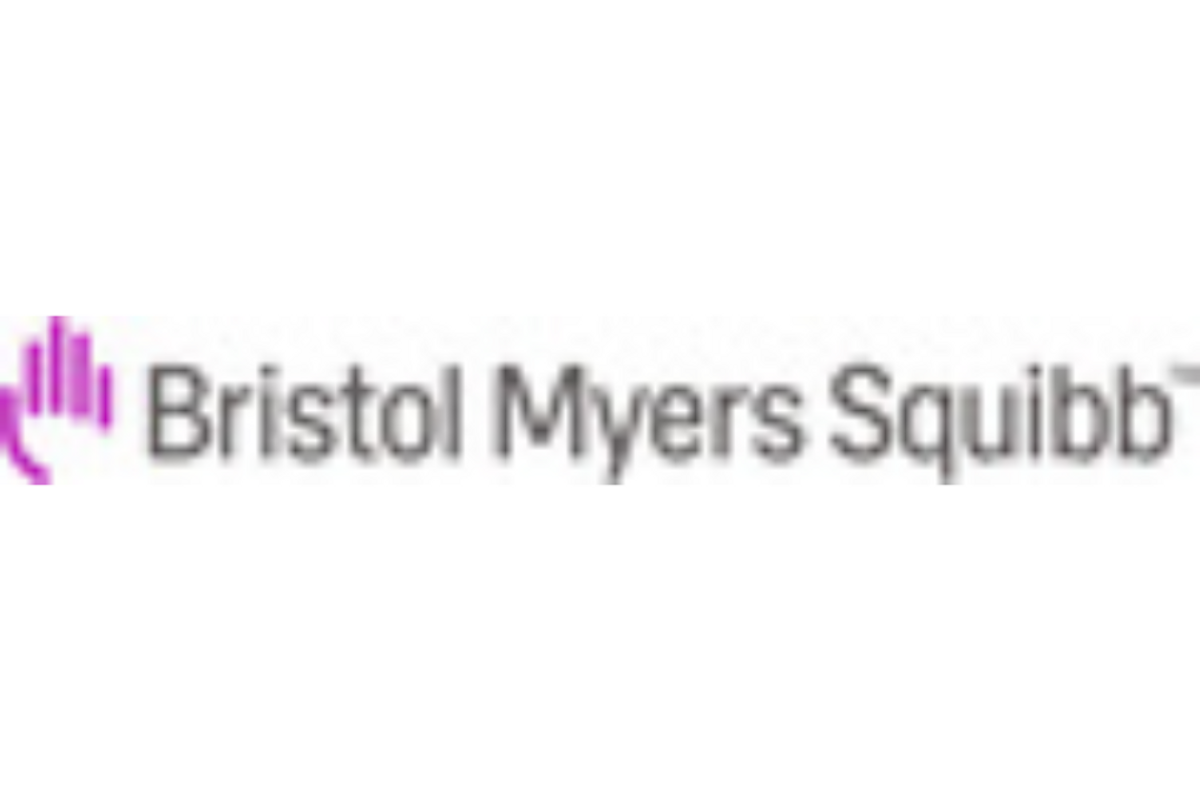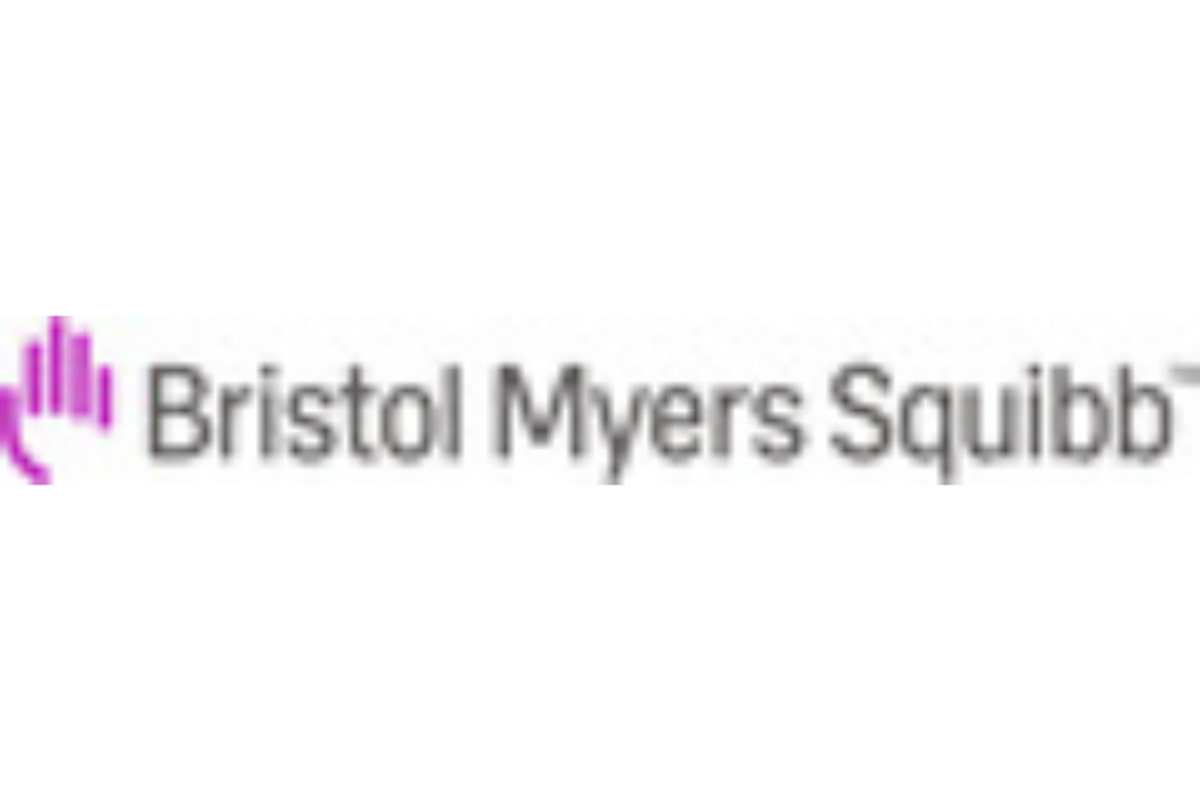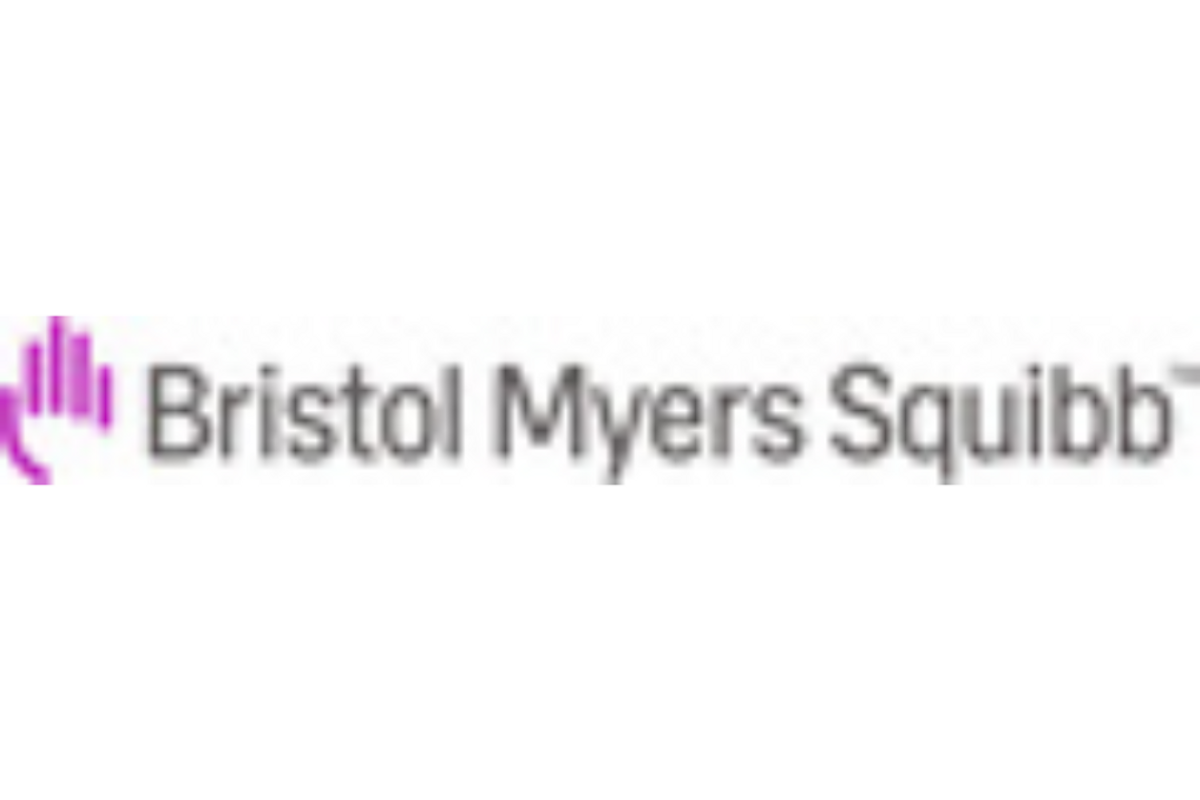U.S. FDA has assigned a target action date of June 16, 2023
Application based on results from the Phase 3 VALOR-HCM study
Bristol Myers Squibb (NYSE: BMY) today announced that the U.S. Food and Drug Administration (FDA) has accepted its supplemental new drug application (sNDA) for CAMZYOS ® (mavacamten) for an expanded indication to reduce the need for septal reduction therapy (SRT). CAMYZOS is currently FDA approved for the treatment of adults with symptomatic New York Heart Association (NYHA) class II-III obstructive hypertrophic cardiomyopathy (HCM) to improve functional capacity and symptoms. The FDA assigned a Prescription Drug User Fee Act (PDUFA) goal date of June 16, 2023.
The sNDA submission was based on the results of the Phase 3 VALOR-HCM study, a randomized, double-blind, placebo-controlled study, which evaluated CAMZYOS in patients with symptomatic, obstructive HCM (NYHA class III-IV) who met the 2011 ACC/AHA guideline criteria for SRT and who have been referred for an invasive procedure. VALOR-HCM met its primary and all secondary endpoints with a high degree of statistical significance, with no new safety signals observed.
About the Phase 3 VALOR-HCM Trial
VALOR-HCM (NCT04349072) is a randomized, double-blind, placebo-controlled, multicenter Phase 3 study of patients with symptomatic, obstructive HCM (NYHA class III-IV) who meet guideline criteria for septal reduction therapy (SRT) and have been referred for an invasive procedure. The study enrolled 112 patients randomized on a 1:1 basis to receive mavacamten or placebo. VALOR-HCM includes three treatment periods over 128 weeks: a 16-week placebo-controlled period, a 16-week active treatment period where all patients received mavacamten and a 96-week long-term extension period where all patients received mavacamten.
The primary endpoint of VALOR-HCM is a composite of the number of patients who decide to proceed with SRT prior to or at Week 16 and the number of patients who remain SRT-guideline eligible (LVOT gradient of ≥50mmHg and NYHA Class III-IV) at Week 16 in the mavacamten group compared with the placebo group. Key secondary endpoints include impact on exercise gradient LVOT, NYHA Class and Kansas City Cardiomyopathy Questionnaire (KCCQ) and biomarkers at Week 16.
About Obstructive Hypertrophic Cardiomyopathy
Obstructive hypertrophic cardiomyopathy (obstructive HCM) is a chronic, progressive disease in which excessive contraction of the heart muscle and reduced ability of the left ventricle to fill can make it difficult for blood to circulate to the rest of the body, leading to the development of debilitating symptoms and cardiac dysfunction. HCM can be hereditary and can develop at any age. Patients are typically diagnosed in their 40s or 50s, and as many as 50% of patients have a hereditary predisposition.
In obstructive HCM, which is the most common type of HCM, the left ventricular outflow tract (LVOT) where blood leaves the heart becomes obstructed by the enlarged heart muscle. As a result, obstructive HCM has also been associated with increased risks of atrial fibrillation, stroke, heart failure and, although rare, sudden cardiac death. The most frequent cause of obstructive HCM is mutations in the heart muscle proteins of the sarcomere. Obstructive HCM is estimated to affect 400,000-600,000 people worldwide, however many patients remain undiagnosed and/or asymptomatic.
About CAMZYOS (mavacamten)
CAMZYOS (mavacamten) is the first and only cardiac myosin inhibitor approved by the U.S. Food and Drug Administration (FDA) indicated for the treatment of adults with symptomatic New York Heart Association (NYHA) class II-III obstructive hypertrophic cardiomyopathy (HCM) to improve functional capacity and symptoms. CAMZYOS is an allosteric and reversible inhibitor selective for cardiac myosin. CAMZYOS modulates the number of myosin heads that can enter "on actin" (power-generating) states, thus reducing the probability of force-producing (systolic) and residual (diastolic) cross-bridge formation. Excess myosin actin cross-bridge formation and dysregulation of the super-relaxed state are mechanistic hallmarks of HCM. CAMZYOS shifts the overall myosin population towards an energy-sparing, recruitable, super-relaxed state. In HCM patients, myosin inhibition with CAMZYOS reduces dynamic LVOT obstruction and improves cardiac filling pressures.
About CAMZYOS REMS Program
CAMZYOS is only available through a restricted program called the CAMZYOS REMS Program because of the risk of heart failure due to systolic dysfunction. Notable requirements of the CAMZYOS REMS Program include the following:
- Prescribers must be certified by enrolling in the REMS Program.
- Patients must enroll in the REMS Program and comply with ongoing monitoring requirements.
- Pharmacies must be certified by enrolling in the CAMZYOS REMS Program and must only dispense to patients who are authorized to receive CAMZYOS.
- Wholesalers and distributors must only distribute to certified pharmacies.
Further information is available by telephone at 1-833-628-7367.
INDICATION
CAMZYOS (mavacamten) is indicated for the treatment of adults with symptomatic New York Heart Association (NYHA) class II-III obstructive hypertrophic cardiomyopathy (HCM) to improve functional capacity and symptoms.
IMPORTANT SAFETY INFORMATION
WARNING: RISK OF HEART FAILURE
CAMZYOS reduces left ventricular ejection fraction (LVEF) and can cause heart failure due to systolic dysfunction.
Echocardiogram assessments of LVEF are required prior to and during treatment with CAMZYOS. Initiation of CAMZYOS in patients with LVEF
Concomitant use of CAMZYOS with certain cytochrome P450 inhibitors or discontinuation of certain cytochrome P450 inducers may increase the risk of heart failure due to systolic dysfunction; therefore, the use of CAMZYOS is contraindicated with the following:
- Moderate to strong CYP2C19 inhibitors or strong CYP3A4 inhibitors
- Moderate to strong CYP2C19 inducers or moderate to strong CYP3A4 inducers
Because of the risk of heart failure due to systolic dysfunction, CAMZYOS is available only through a restricted program under a Risk Evaluation and Mitigation Strategy (REMS) called the CAMZYOS REMS PROGRAM.
CONTRAINDICATIONS
CAMZYOS is contraindicated with concomitant use of:
- Moderate to strong CYP2C19 inhibitors or strong CYP3A4 inhibitors
- Moderate to strong CYP2C19 inducers or moderate to strong CYP3A4 inducers
WARNINGS AND PRECAUTIONS
Heart Failure
CAMZYOS reduces systolic contraction and can cause heart failure or totally block ventricular function. Patients who experience a serious intercurrent illness (e.g., serious infection) or arrhythmia (e.g., atrial fibrillation or other uncontrolled tachyarrhythmia) are at greater risk of developing systolic dysfunction and heart failure.
Assess the patient's clinical status and LVEF prior to and regularly during treatment and adjust the CAMZYOS dose accordingly. New or worsening arrhythmia, dyspnea, chest pain, fatigue, palpitations, leg edema, or elevations in N-terminal pro-B-type natriuretic peptide (NT-proBNP) may be signs and symptoms of heart failure and should also prompt an evaluation of cardiac function.
Asymptomatic LVEF reduction, intercurrent illnesses, and arrhythmias require additional dosing considerations.
Initiation of CAMZYOS in patients with LVEF
CYP 450 Drug Interactions Leading to Heart Failure or Loss of Effectiveness
CAMZYOS is primarily metabolized by CYP2C19 and CYP3A4 enzymes. Concomitant use of CAMZYOS and drugs that interact with these enzymes may lead to life-threatening drug interactions such as heart failure or loss of effectiveness.
Advise patients of the potential for drug interactions, including with over the counter medications (such as omeprazole, esomeprazole, or cimetidine). Advise patients to inform their healthcare provider of all concomitant products prior to and during CAMZYOS treatment.
CAMZYOS Risk Evaluation and Mitigation Strategy (REMS) Program
CAMZYOS is only available through a restricted program called the CAMZYOS REMS Program because of the risk of heart failure due to systolic dysfunction. Notable requirements of the CAMZYOS REMS Program include the following:
- Prescribers must be certified by enrolling in the REMS Program.
- Patients must enroll in the REMS Program and comply with ongoing monitoring requirements.
- Pharmacies must be certified by enrolling in the REMS Program and must only dispense to patients who are authorized to receive CAMZYOS.
- Wholesalers and distributors must only distribute to certified pharmacies.
Further information is available at www.CAMZYOSREMS.com or by telephone at 1-833-628-7367.
Embryo-Fetal Toxicity
CAMZYOS may cause fetal toxicity when administered to a pregnant female, based on animal studies. Confirm absence of pregnancy in females of reproductive potential prior to treatment and advise patients to use effective contraception during treatment with CAMZYOS and for 4 months after the last dose. CAMZYOS may reduce the effectiveness of combined hormonal contraceptives (CHCs). Advise patients using CHCs to use an alternative contraceptive method that is not affected by CYP 450 enzyme induction or to add nonhormonal contraception. Advise females of reproductive potential about the potential risk to the fetus with maternal exposure to CAMZYOS during pregnancy.
ADVERSE REACTIONS
In the EXPLORER-HCM trial, adverse reactions occurring in >5% of patients and more commonly in the CAMZYOS group than in the placebo group were dizziness (27% vs 18%) and syncope (6% vs 2%).
Effects on Systolic Function
In the EXPLORER-HCM trial, mean (SD) resting LVEF was 74% (6) at baseline in both treatment groups. Mean (SD) absolute change from baseline in LVEF was -4% (8) in the CAMZYOS group and 0% (7) in the placebo group over the 30-week treatment period. At Week 38, following an 8-week interruption of trial drug, mean LVEF was similar to baseline for both treatment groups. In the EXPLORER-HCM trial, 7 (6%) patients in the CAMZYOS group and 2 (2%) patients in the placebo group experienced reversible reductions in LVEF
DRUG INTERACTIONS
Potential for Other Drugs to Affect Plasma Concentrations of CAMZYOS
CAMZYOS is primarily metabolized by CYP2C19 and to a lesser extent by CYP3A4 and CYP2C9. Inducers and inhibitors of CYP2C19 and moderate to strong inhibitors or inducers of CYP3A4 may affect the exposures of CAMZYOS.
Impact of Other Drugs on CAMZYOS:
- Moderate to Strong CYP2C19 Inhibitors or Strong CYP3A4 Inhibitors: Concomitant use increases CAMZYOS exposure, which may increase the risk of heart failure due to systolic dysfunction. Concomitant use is contraindicated.
- Moderate to Strong CYP2C19 Inducers or Moderate to Strong CYP3A4 Inducers: Concomitant use decreases CAMZYOS exposure, which may reduce CAMZYOS' efficacy. The risk of heart failure due to systolic dysfunction may increase with discontinuation of these inducers as the levels of induced enzyme normalizes. Concomitant use is contraindicated.
- Weak CYP2C19 Inhibitors or Moderate CYP3A4 Inhibitors: Concomitant use with a weak CYP2C19 inhibitor or a moderate CYP3A4 inhibitor increases CAMZYOS exposure, which may increase the risk of adverse drug reactions. Initiate CAMZYOS at the recommended starting dose of 5 mg orally once daily in patients who are on stable therapy with a weak CYP2C19 inhibitor or a moderate CYP3A4 inhibitor. Reduce dose of CAMZYOS by one level (i.e., 15 to 10 mg, 10 to 5 mg, or 5 to 2.5 mg) in patients who are on CAMZYOS treatment and intend to initiate a weak CYP2C19 inhibitor or a moderate CYP3A4 inhibitor. Schedule clinical and echocardiographic assessment 4 weeks after inhibitor initiation, and do not up-titrate CAMZYOS until 12 weeks after inhibitor initiation. Avoid initiation of concomitant weak CYP2C19 and moderate CYP3A4 inhibitors in patients who are on stable treatment with 2.5 mg of CAMZYOS because a lower dose is not available.
Potential for CAMZYOS to Affect Plasma Concentrations of Other Drugs
CAMZYOS is an inducer of CYP3A4, CYP2C9, and CYP2C19. Concomitant use with CYP3A4, CYP2C19, or CYP2C9 substrates may reduce plasma concentration of these drugs. Closely monitor when CAMZYOS is used in combination with CYP3A4, CYP2C19, or CYP2C9 substrates where decreases in the plasma concentration of these drugs may reduce their activity.
Hormonal Contraceptives: Progestin and ethinyl estradiol are CYP3A4 substrates. Concomitant use of CAMZYOS may decrease exposures of ethinyl estradiol and progestin, which may lead to contraceptive failure or an increase in breakthrough bleeding. Advise patients to use a contraceptive method that is not affected by CYP 450 enzyme induction (e.g., intrauterine system) or add nonhormonal contraception (such as condoms) during concomitant use and for 4 months after the last dose of CAMZYOS.
Drugs That Reduce Cardiac Contractility
Expect additive negative inotropic effects of CAMZYOS and other drugs that reduce cardiac contractility. Avoid concomitant use of CAMZYOS with disopyramide in combination with verapamil or diltiazem. If concomitant therapy with a negative inotrope is initiated, or if the dose of a negative inotrope is increased, monitor LVEF closely until stable doses and clinical response have been achieved.
SPECIFIC POPULATIONS
Pregnancy
CAMZYOS may cause fetal harm when administered to a pregnant female. Advise pregnant females about the potential risk to the fetus with maternal exposure to CAMZYOS during pregnancy. There is a pregnancy safety study for CAMZYOS. If CAMZYOS is administered during pregnancy, or if a patient becomes pregnant while receiving CAMZYOS or within 4 months after the last dose of CAMZYOS, healthcare providers should report CAMZYOS exposure by contacting Bristol Myers Squibb at 1-800-721-5072 or www.bms.com .
Lactation
The presence of CAMZYOS in human or animal milk, the drug's effects on the breastfed infant, or the effects on milk production are unknown. The developmental and health benefits of breastfeeding should be considered along with the mother's clinical need for CAMZYOS and any potential adverse effects on the breastfed child from CAMZYOS or from the underlying maternal condition.
Females and Males of Reproductive Potential
Confirm absence of pregnancy in females of reproductive potential prior to initiation of CAMZYOS. Advise females of reproductive potential to use effective contraception during treatment with CAMZYOS and for 4 months after the last dose. Use of CAMZYOS may reduce the effectiveness of CHCs. Advise patients using CHCs to use an alternative contraceptive method or add nonhormonal contraception.
Please see US Full Prescribing Information , including Boxed WARNING and Medication Guide .
About Bristol Myers Squibb
Bristol Myers Squibb is a global biopharmaceutical company whose mission is to discover, develop and deliver innovative medicines that help patients prevail over serious diseases. For more information about Bristol Myers Squibb, visit us at BMS.com or follow us on LinkedIn , Twitter , YouTube , Facebook and Instagram .
Cautionary Statement Regarding Forward-Looking Statements
This press release contains "forward-looking statements" within the meaning of the Private Securities Litigation Reform Act of 1995 regarding, among other things, the research, development and commercialization of pharmaceutical products. All statements that are not statements of historical facts are, or may be deemed to be, forward-looking statements. Such forward-looking statements are based on current expectations and projections about our future financial results, goals, plans and objectives and involve inherent risks, assumptions and uncertainties, including internal or external factors that could delay, divert or change any of them in the next several years, that are difficult to predict, may be beyond our control and could cause our future financial results, goals, plans and objectives to differ materially from those expressed in, or implied by, the statements. These risks, assumptions, uncertainties and other factors include, among others, whether CAMZYOS (mavacamten) for the indication described in this release will be commercially successful, any marketing approvals, if granted, may have significant limitations on their use, and that continued approval of such product candidate for such indication described in this release may be contingent upon verification and description of clinical benefit in confirmatory trials. No forward-looking statement can be guaranteed. Forward-looking statements in this press release should be evaluated together with the many risks and uncertainties that affect Bristol Myers Squibb's business and market, particularly those identified in the cautionary statement and risk factors discussion in Bristol Myers Squibb's Annual Report on Form 10-K for the year ended December 31, 2021, as updated by our subsequent Quarterly Reports on Form 10-Q, Current Reports on Form 8-K and other filings with the Securities and Exchange Commission. The forward-looking statements included in this document are made only as of the date of this document and except as otherwise required by applicable law, Bristol Myers Squibb undertakes no obligation to publicly update or revise any forward-looking statement, whether as a result of new information, future events, changed circumstances or otherwise.
corporatefinancial-news
View source version on businesswire.com: https://www.businesswire.com/news/home/20221020006130/en/
Bristol Myers Squibb
Media Inquiries:
Elizabeth Sell
elizabeth.sell@bms.com
215-380-1691
Investors:
Tim Power
timothy.power@bms.com
609-252-7509



